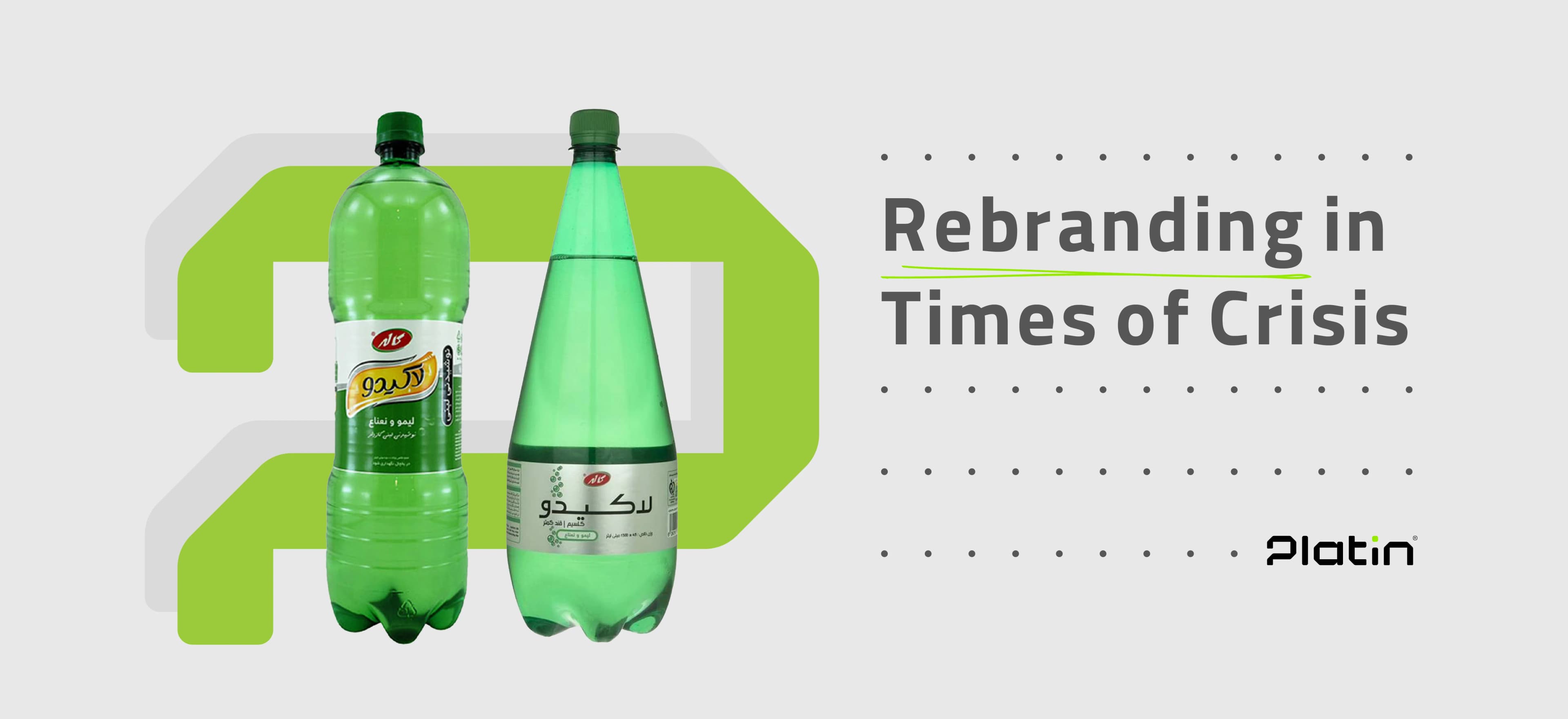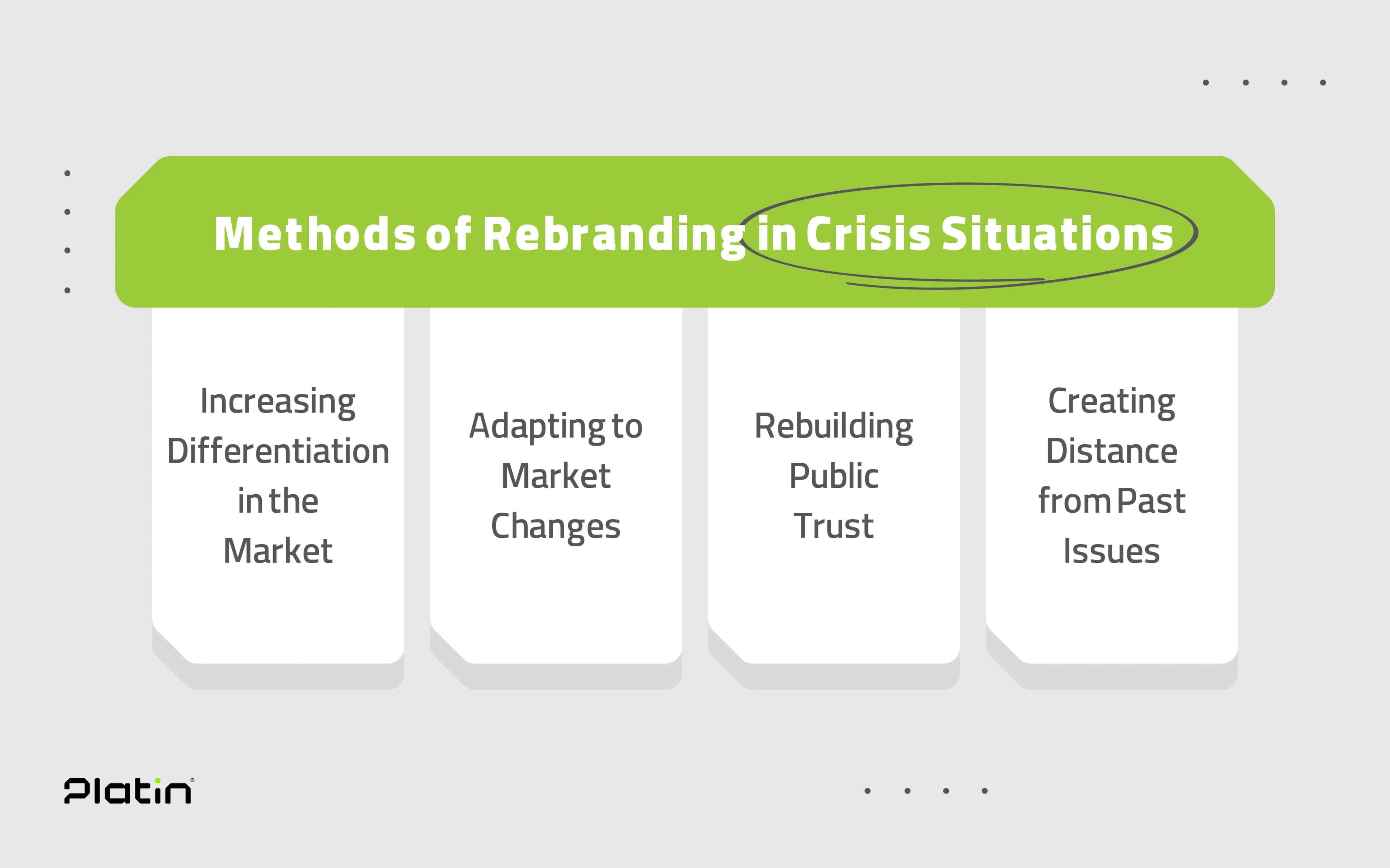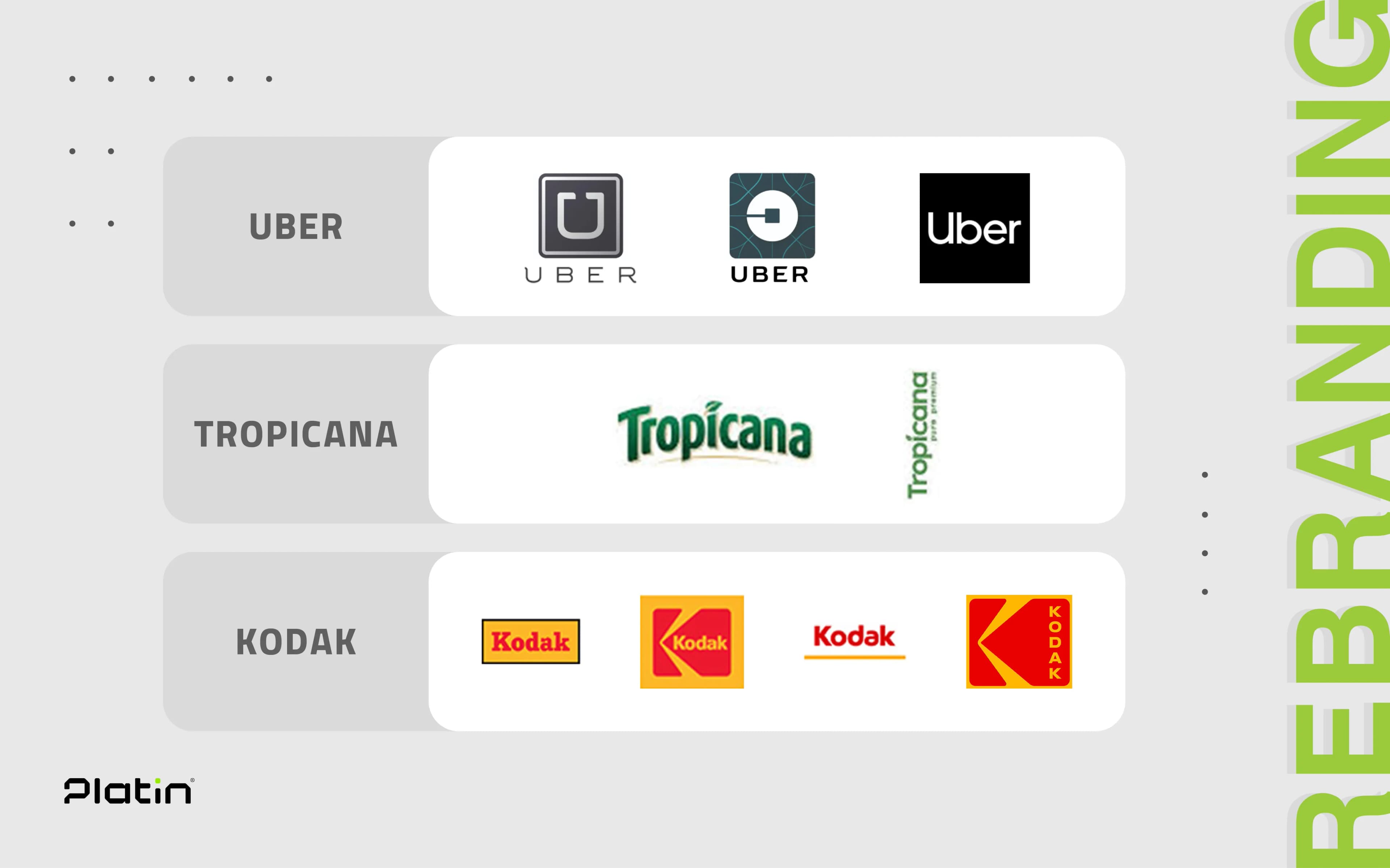Rebranding in Times of Crisis
Return to Blogs
In periods of crisis, companies and brands may face significant challenges, including declining sales, loss of customer trust, or damage to their reputations. In such situations, rebranding can serve as a powerful tool for crisis management, enabling organizations to refresh their image, restore public confidence, and resume growth. This article explores how rebranding can be used in crisis management and examines case studies of famous brands that have successfully implemented this strategy.
Rebranding as a Tool for Crisis ManagementDuring a crisis, rebranding can benefit organizations in several key ways. Here, we focus on four essential methods:

Distancing from Past Issues: Rebranding enables companies to distance themselves from past problems. By changing aspects like their name, logo, or tagline, companies can direct public attention toward positive changes, helping to dissolve any previous negative associations. This approach has been especially effective for companies such as Uber, which faced challenges related to corporate culture or ethics.
Rebuilding Public Trust: Customer trust often suffers in a crisis, and restoring it requires focused efforts. Rebranding can play a pivotal role by presenting a renewed image that emphasizes fresh commitments, improved quality in products or services, and enhanced core values. For example, companies that have encountered public complaints or scandals can emphasize transparency and internal improvements to regain customer trust.
Adapting to Market Changes: Crises frequently create shifts in the market that demand a quick response. Rebranding provides companies with an opportunity to adapt to these new conditions, introduce fresh products or services, and convey updated messaging to their audiences. For instance, if a crisis results in a shift in consumer behavior, brands can align with these changes through updated visuals and advertising messages.
Increasing Market Differentiation: In times of crisis, competition can become even more intense, and brands must work to distinguish themselves to remain competitive. Rebranding allows companies to refresh the visual or substantive aspects of their brand, setting themselves apart from competitors and strengthening their position. This approach is especially effective in industries with high competition, helping companies to capture a larger share of the market.
 Case Studies: Brands Using Rebranding in Times of Crisis
Case Studies: Brands Using Rebranding in Times of CrisisIn times of crisis, many companies adopt rebranding strategies to regain their footing and navigate challenging circumstances. Case studies of brands that have taken this path reveal how rebranding can serve as an effective crisis management tool. Here, we examine successful examples of brands that have managed their crises and rebuilt customer trust through rebranding.
 Uber
Uber In addition to these three examples, companies such as Pepsi and Apple have also employed rebranding strategies during challenging times. Pepsi, for instance, quickly adjusted its marketing strategy to highlight its brand’s strengths after an unsuccessful ad campaign, allowing it to regain market standing. Similarly, Apple faced a major crisis in the 1990s and, with the return of Steve Jobs, refocused its strategy on innovative products and modern design, ultimately transforming into one of the world’s largest brands.  In conclusion, rebranding can help companies navigate crises by not only overcoming challenges but also creating a positive and renewed identity that promotes growth and success. However, for this process to be effective, companies must thoroughly analyze market and customer needs, implementing changes that align with their core identity and values. Learning from the successful experiences of the brands reviewed here highlights the vital role that rebranding can play in effective crisis management.
In conclusion, rebranding can help companies navigate crises by not only overcoming challenges but also creating a positive and renewed identity that promotes growth and success. However, for this process to be effective, companies must thoroughly analyze market and customer needs, implementing changes that align with their core identity and values. Learning from the successful experiences of the brands reviewed here highlights the vital role that rebranding can play in effective crisis management.